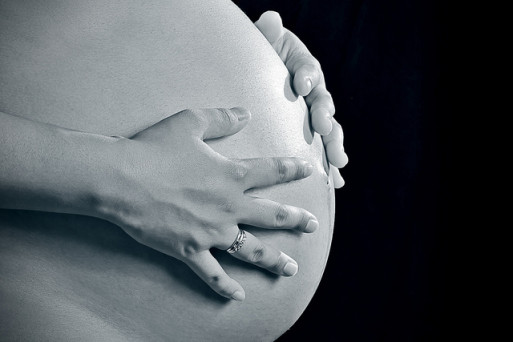What happens when you die while pregnant? For most women, nothing at all. Unless the fetus is viable, and doctors work to save an unborn child from its host’s womb, the fetus simply dies alongside the woman.
However, rare cases throughout history have presented a different story; sometimes, would-be mothers appear to “give birth” vaginally, long after they have died. Colloquially, this is called a “coffin birth,” but its true medical diagnosis is referred to as “postmortem fetal extrusion.”
Since Spanish executioners commonly left bodies hanging on tree branches long after the initial execution, the woman remained untouched for four hours before someone noticed something amiss.
The first documented case of an alleged coffin birth took place in 1551, when a heavily pregnant woman was hanged during the Spanish Inquisition. Since Spanish executioners commonly left bodies hanging on tree branches long after the initial execution, the woman remained untouched for four hours before someone noticed something amiss. Two dead fetuses had fallen from the woman’s body, shocking bystanders.
Since this time, only a handful of verified coffin birth cases have made it into medical textbooks. Scientists are still unsure why this phenomenon happens, but they have a theory. Nearly every case of postmortem fetal extrusion occurs when a pregnant woman is left undisturbed for days. In fact, this is what makes the first Spanish Inquisition case so unusual, as historians claim it happened within hours of death.
Today’s verified cases stem from extensive decomposition. In the past 10 years, two cases of alleged coffin births have occurred. In one case, the body of a 34-year-old woman in Germany was discovered in her apartment, days after she had died from a heroin overdose. Examiners found that the head and shoulders of a fetus had began to exit her body. In another case from 2008, a 38-year-old woman was discovered murdered in Panama. The heat had caused her body to severely and quickly decompose, which medical examiners say caused the fetus inside of her to push outside of her body.
In pregnant women, this can sometimes cause not only a fetus to leave the body through the vaginal opening, but also cause the entire uterus to be expelled from the body after death.
When a body is left to decompose on its own, weather conditions can cause it to bloat, which results in high internal pressure inside of the torso. In pregnant women, this can sometimes cause not only a fetus to leave the body through the vaginal opening, but also cause the entire uterus to be expelled from the body after death. In this sense, it is not a “birth labor” at all, but a natural response to internal pressure.
It would make sense then that the introduction of new embalming techniques in the late 19th century would virtually stop new cases of postmortem fetal extrusion. At this time, Western culture became obsessed with the idea of a beautiful death. The richest people in Europe and North America would have their bodies cared for by skilled morticians, who would pump their bodies with a potent mixture of formaldehyde and other chemicals. The wealthy would order elaborate coffins, so that their beautified bodies could be on display for all of their friends and family to gaze upon in awe.
The technique creates modern mummies of sorts, stopping the common death bloat altogether.
When embalming chemicals replace the natural fluids in the body, it slows down the decomposition process. The technique creates modern mummies of sorts, stopping the common death bloat altogether. It was impossible for pregnant women to have coffin births when they were given this post-death treatment, as the pressure inside of their bodies could never build up to the extent that the fetuses would naturally expel.
As we have seen, coffin births still happen today, but they have become increasingly rare. Cremation and embalming in the Western world are two of the most common ways to handle bodies after death, which has made postmortem fetal extrusion virtually a thing of the past. What began as a way to make death appear more beautiful has had an unexpected impact on one of medical history’s strangest conditions.

 How Embalming Cultures Accidentally Prevented the Coffin Birth Phenomenon
How Embalming Cultures Accidentally Prevented the Coffin Birth Phenomenon



 Terminal Sedation at the End of Life
Terminal Sedation at the End of Life
 National Donate Life Month Reminds Us To Give
National Donate Life Month Reminds Us To Give
 How Dare You Die Now!
How Dare You Die Now!














